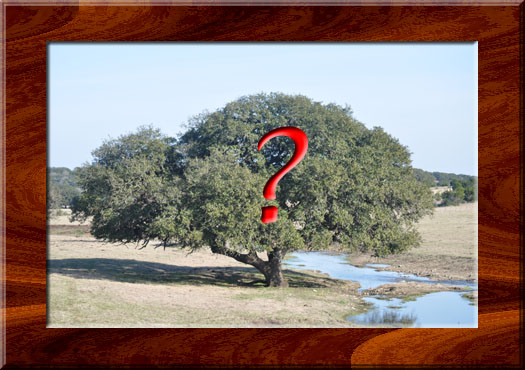
877-842-8733


🍃 Oak Wilt
How do I know that I have Oak Wilt?
There are several things that can be examined to diagnose the disease. First, look for foliar (leaf) symptoms on suspect trees or on the ground around them. Second, determine if a sick Oak is part of a cluster of sick Oaks. If the Oaks are looking poorly and the other trees are fine in the same area, that can be a warning sign for Oak Wilt. In the initial stages it may be difficult to diagnose Oak Wilt, especially during periods of drought. If you have questions about the diagnosis, give us a call and we’ll evaluate your situation.
How Does Oak Wilt Spread?
Oak Wilt spreads in two ways. Sap feeding beetles can bring Oak Wilt spores from infected red Oaks and deposit them on fresh tree wounds. Second, the disease can spread directly from tree to tree via their root connections. The disease does not spread through the air or the soil.
How do I prevent Oak Wilt on my property?
You can reduce the chance of beetle borne infection by immediately covering wounds on Oak trees with pruning sealer. Prevention of root transmission is best accomplished by severing the roots between healthy and diseased trees by trenching.
What about firewood?
If you bring red Oak firewood onto your property, you may inadvertently bring an Oak Wilt spore mat also. This can greatly increase your chances of starting an Oak Wilt disease center. If you do not know the history of the firewood, cover it with clear plastic for a year to allow any potential spore mats to dry up. If you know that all of the firewood is from Live Oaks, there is no risk of infection. Burning any type of Oak wood will kill the Oak Wilt fungus. There is no risk of spreading the disease through smoke.
How should I clean my pruning tools?
You can minimize the risk of transmitting Oak Wilt from tree to tree via your pruning implements by spraying them with a bleach solution (or Lysol®) between trees.
What time of the year is it safe to trim my trees?
The highest risk time to prune your Oaks is February through June. That said, we have seen new infections start all through the year, so painting any and all pruning cuts on your Oaks is a must.
Which pruning wounds should I paint?
In order to reduce the risk of beetle infection during pruning, immediately spray any tree wound, of any size, regardless of temperature or time of year, with pruning sealer. Anything short of this will increase your risk of starting an Oak Wilt infection.
🍃 Fungicide Treatment (Injections)
How much does treatment cost?
Fungicide treatments are based on the diameter of the tree and therefore vary quite a bit. The average tree costs about $250 to treat once. However, there are discounts available for larger projects. We will provide you with a detailed, written quote for your treatment based on your individual requirements.
How often do I need to treat?
In general, two treatments are required; spaced 18-24 months apart. Tree size, weather conditions, and disease movement can change the timing and frequency of treatments. An important part of our service is determining which trees to treat and when to treat them.
When do I need to treat?
You need to treat a tree when it is determined to be at risk of encountering Oak Wilt within the next 12 months or less. Generally, speaking this means that all trees that you wish to protect from Oak Wilt that are closer than 75-100 feet of active disease are candidates for treatment.
How effective are treatments?
If a tree is treated prior to symptom development and re-treated as required, you can expect an 85% or better survival rate. Trees that are showing symptoms or are immediately adjacent to sick trees are less likely to respond favorably to treatment. Untreated Live Oaks have a 15% survival rate with most of the survivors having poor canopies.
What are the risks of treatment?
Live Oaks tolerate the treatment quite well. However, a small number will suffer a reaction to the treatment and die. We have found that the mortality rate from treatment is less than 0.5%. Drought stress can increase the chance of a fatal reaction to the treatment. However, considering the damage done by the disease, the benefits of treatment far outweigh the small chance of treatment fatality. We recommend that no trees be treated unless they are under threat of Oak Wilt infection in the next 12 months or less.
What injection method do you use?
Our company uses the scientifically proven macro flare root injection technique. The fungicide that we use is Propaconizole (brand name Alamo®). This combination of technique and chemical is the ONLY method approved of by the Texas Forest Service. This is the only protocol that has numerous scientific studies that show positive results. Any other application method, chemical (organic or not) does not have any scientific evidence demonstrating effectiveness as an Oak Wilt treatment.
🍃 Suppression Trenching
How much does trenching cost?
Due to the variables involved with each project, an individual written estimate is prepared for each client. The main factors associated with trenching projects are: the length of the trench, infrastructure to be crossed and repaired (buried utilities, pavement, fences, etc.), and topography (exceptionally hilly, exceptionally rocky, etc.). In general, most trenching projects cost between $4,000 and $9,000. Your trench may also qualify for financial assistance from the Texas Forest Service. We can survey your project and suggest ways to have your trench installed economically and with minimal impact to your property.
How effective is trenching?
Many factors can impact the success of a trenching project. These factors include: location of the trench with respect to the disease, the depth of the trench, the proximity of large trees to the trench and the continuity (absence of gaps) of the trench. The Texas Forest Service reports that properly installed trenches have about a 75% success rate.
How deep should I trench?
The primary cause of trench failure is tree roots underneath the trench cut. Therefore, the depth of the trench is a critical factor in success. Deeper is better. That is why we have invested in equipment that cuts deeper than anything else typically used to install an Oak Wilt trench.
